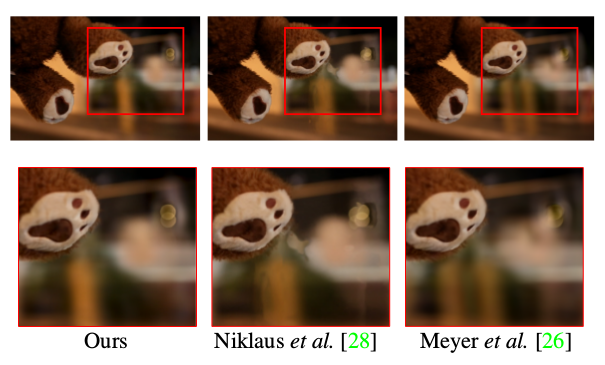Abstract

Most approaches for video frame interpolation require accurate dense correspondences to synthesize an in-between frame. Therefore, they do not perform well in challenging scenarios with, e.g., lighting changes or motion blur. Recent deep learning approaches that rely on kernels to represent motion can only alleviate these problems to some extent. In those cases, methods that use a per-pixel phase-based motion representation have been shown to work well. However, they are only applicable for a limited amount of motion. We propose a new approach, PhaseNet, that is designed to robustly handle challenging scenarios while also coping with larger motion. Our approach consists of a neural network decoder that directly estimates the phase decomposition of the intermediate frame. We show that this is superior to the hand-crafted heuristics previously used in phase-based methods and also compares favorably to recent deep learning based approaches for video frame interpolation on challenging datasets.
Additional Content
Copyright Notice
The documents contained in these directories are included by the contributing authors as a means to ensure timely dissemination of scholarly and technical work on a non-commercial basis. Copyright and all rights therein are maintained by the authors or by other copyright holders, notwithstanding that they have offered their works here electronically. It is understood that all persons copying this information will adhere to the terms and constraints invoked by each author’s copyright. These works may not be reposted without the explicit permission of the copyright holder.